Lumbar microdiscectomy
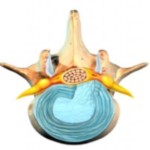 Summary:
Summary:- Used to treat nerve compression from a herniated disc
- Minimally invasive
- Typical discharge on the same day
Background
In the spine, between all the vertebrae (also known as the building blocks that make up our spine) there are intervertebral discs. These discs are softer than the bone of the vertebrae and they provide shock absorption and flexibility in the back. There are two parts to the disk: a tougher outer part and an inner softer part. For this reason, the disc is often compared to a “jelly-filled donut”. They function to help keep the proper distance between the vertebral bones. Nerves exit from our spinal cord at each segment between the vertebral bones at the same level as the discs. Each of these nerves is responsible for sensation to and from a specific body part. The nerve root is the part closest to the spinal cord, i.e. where the nerve exits the spinal cord. Those nerve roots that exit from the lumbar spine go to our hips, legs and feet.
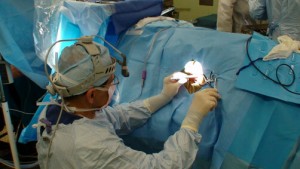 The problem
The problem
There are several causes for a disc to change shape but the most common cause is when the “jelly” part of the disc squeezes out of the “donut”. This is called a herniated disc. The second most common reason is a “bulging” or flattening of the disc which results from a loss of water content in the disc and therefore loss of overall disc height. In either case, a nerve root exiting between the disc and the vertebra can become compressed or “pinched”.
No matter the cause, a pinched nerve can interfere with the normal functioning of that nerve, which can lead to pain, weakness and numbness in the body part that corresponds with the pinched nerve. Besides leg and low back pain, herniated and severely budging discs can also affect bladder and bowel function.
What the Surgery does
Microdiscectomy (or microdecompression) is a surgery that relieves the pressure on the pinched nerve. During a microdiscectomy, a small portion of the bone over the nerve root and/or disc material from under the nerve root is removed to relieve nerve root compression and provide more room for the nerve so that it can heal and resume normal functioning. The microdiscectomy procedure works well for treating leg pain (also known as radiculopathy). Because lower back pain can be due to various reasons besides a disc problem, persistent back pain after surgery, although rare, can still occur. While it may take days, weeks or even months for the nerve root to fully heal and any numbness or weakness to subside, many patients get relief from their leg pain almost immediately after the surgery.
How Microdiscectomy Surgery is Performed
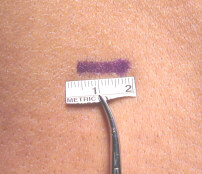 A microdiscectomy is performed under a surgical microscope using minimally invasive techniques. The surgery is performed through a small (1 inch to 1 1/2 inch) incision in the mid-line of the low back, and at the height of the impingement.
A microdiscectomy is performed under a surgical microscope using minimally invasive techniques. The surgery is performed through a small (1 inch to 1 1/2 inch) incision in the mid-line of the low back, and at the height of the impingement.
- First, the back muscles are moved out of the way rather than having to cut them.
- The surgeon is then able to enter the spine by removing a ligament covering from the nerve roots. This is done using an operating microscope to better visualize the nerve root.
- Often, a small portion of bone is removed both to facilitate access to the nerve root and to relieve pressure over the nerve.
- The nerve root is then gently moved to the side and the bulging disc material is removed from under the nerve root.
Importantly, since almost all of the joints, ligaments and muscles are left intact, a microdiscectomy does not significantly change the mechanical structure of the patient’s lower spine. Therefore, it is reasonable to return to a normal level of functioning following this spine surgery. Usually, a microdiscectomy is performed on an outpatient basis (with no overnight stay in the hospital) or with just one night in the hospital.
When is Surgery Necessary?
Often times both leg pain and back pain tend to get better without surgery. During this time conservative therapies can help. However, if the leg pain does not get better with nonsurgical treatments, then a microdiscectomy surgery may be a reasonable option to relieve pressure on the nerve root and allow nerve root healing. Immediate spine surgery may be necessary in cases of bowel/bladder incontinence (cauda equina syndrome) or progressive neurological deficits. It may also be reasonable to consider acute back surgery if the leg pain is severe.
A microdiscectomy is typically recommended for patients who have:
- Experienced leg pain for at least six weeks
- Not found sufficient pain relief with conservative treatment (such as oral steroids, NSAID’s, and physical therapy)
While waiting several weeks before deciding to undergo surgery is in many cases advisable, waiting too long can have adverse effects on the results of the surgery. After three to six months of symptoms, the anticipated results of the spine surgery are not quite as favorable since the nerve may have suffered permanent damage at that point. Hence, it is not generally advisable to postpone microdiscectomy surgery for more than three to six months.
Videos of Lumbar Microdisectomy:
Identification of Lumbar Herniated Disc
Removal of Lumbar Herniated Disc
Closure of Lumbar Incision
Tri-State Neurosurgical Associates-UPMC
Administrative Oakland Office Address:
Presbyterian University Hospital
Department of Neurosurgery
Suite 5C
200 Lothrop Street
Pittsburgh, PA 15213
Phone: 1-888-234-4357
© 2013 Tri-State Neurosurgical Associates – UPMC

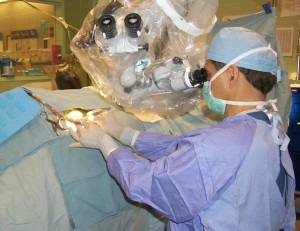
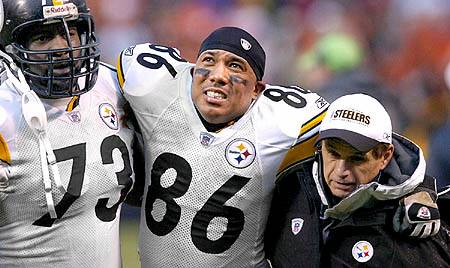

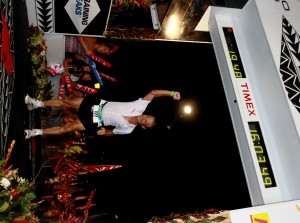 Dr. Maroon received an athletic scholarship to Indiana University in Bloomington, Indiana where as an undergraduate, he was named a Scholastic All-American in football. Dr. Maroon has successfully maintained his personal athletic interests through participation in 9 marathons and more than 72 Olympic-distance triathlon events. However, his greatest athletic accomplishment is his participation in 8 Ironman triathlons (Hawaii – 1993, 2003, 2008, 2010, 2013; Canada – 1995; New Zealand – 1997; Germany – 2000), where he usually finishes in the top 10 of his age group. Recently, in July 2012 and 2013, he finished second and third, respectively, in his age group in the Muncie, Indiana half Ironman triathlon. In October 2013 he completed his 5th World Championship Ironman in Kona, Hawaii.
Dr. Maroon received an athletic scholarship to Indiana University in Bloomington, Indiana where as an undergraduate, he was named a Scholastic All-American in football. Dr. Maroon has successfully maintained his personal athletic interests through participation in 9 marathons and more than 72 Olympic-distance triathlon events. However, his greatest athletic accomplishment is his participation in 8 Ironman triathlons (Hawaii – 1993, 2003, 2008, 2010, 2013; Canada – 1995; New Zealand – 1997; Germany – 2000), where he usually finishes in the top 10 of his age group. Recently, in July 2012 and 2013, he finished second and third, respectively, in his age group in the Muncie, Indiana half Ironman triathlon. In October 2013 he completed his 5th World Championship Ironman in Kona, Hawaii.